MLX90614 Distance Dependency
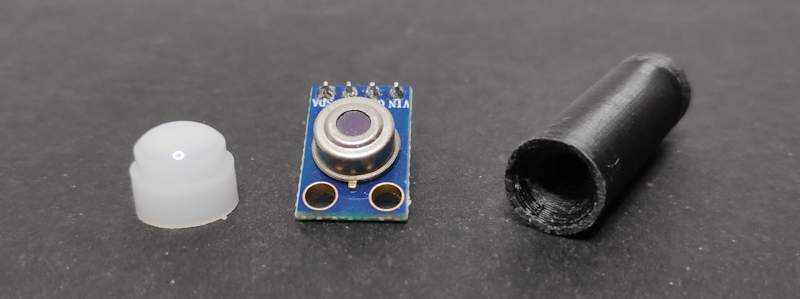
Disclosure: Some of the links below are affiliate links and we only earn a small commission if you purchase through our links at no additional cost to you. The earning mainly used for maintaining the website.
As you have already hooked up the MLX90614 to your projects for temperature readings. But, wait! How far can it read the temperature? The temperature readings vary as the object moves away from the sensor. When the object is near the sensor, a higher temperature will be detected. In the opposite way, a lower temperature is when the object is far from the sensor.
So, how exactly does the distance of the object affects the detection range of the contactless infrared sensor? The distance dependency can be reduced with lenses – lens hood and Fresnel lens.
Starter Pack
- Arduino Uno/Mega/Nano
- MLX90614 Contactless Infrared Temperature Sensor
- Breadboard
- Jumper Wires
- Lens Hood
- Fresnel Lens
Lens Hood Working Principle
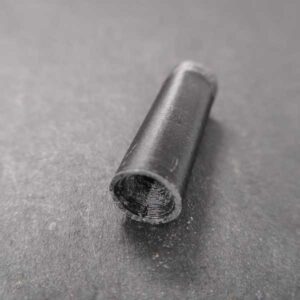
Field of view (FOV) can be simplified into an area of detection by the infrared sensor. Just like human eyes, we can see nearly 135 degrees. Beyond that, we cannot see anything. The human eyes and sensors are almost the same. A wide FOV sensor means it can sense changes within that area. Is it good to have a wide FOV? Well, this is not always the case.

The MLX90614 – “BAA” model, has a FOV of 90 degrees which is quite wide for an infrared temperature sensor. Any noise temperature (which might affect the readings) within that field will be read by the sensor. Let’s say, from the above image, green objects’ temperature is 10 degrees Celsius and red object’s temperature is 100 degrees Celsius. The temperature readings for red object read by sensor is 40 degrees Celsius (average of three objects’ temperature).
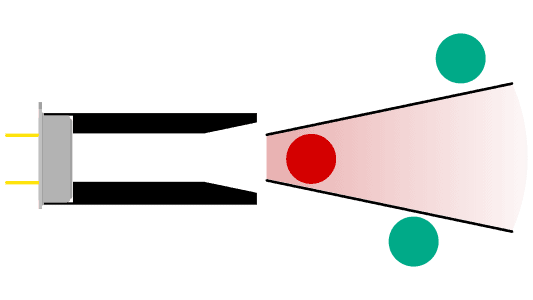
For a better temperature reading, a lens hood is put on. The function of the lens hood is to reduce the field of view of the sensor. The infrared radiation from green objects is shielded away by the small FOV of the lens hood. What is left is the radiation from the red object only. This makes the temperature readings close to the object’s temperature.
When using the lens hood, it is important to look for a deeper funnel to guide the infrared radiation into the sensor. A 60 degrees funnel should be enough. While for the material, it is good to have a high thermal conductivity like copper or aluminum to absorb the infrared radiation. And of course, painted in black as the black surface is a good heat absorber.
Fresnel Lens Working Principle

A Lens works differently with the lens hood. The lens brings infrared from a distance and focuses into a certain focal length on the sensor. A sharper and detailed infrared resolution can be read by the sensor. Same as a camera with different focal length lenses to capture stunning photos.
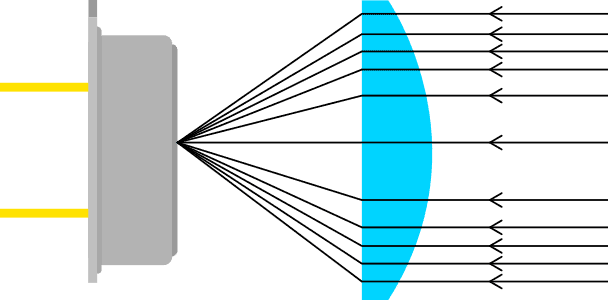
The conventional plano-convex lens is thick for a short focal length. The concentric ring’s design of Fresnel lens makes the thickness much thinner than plano-convex lens at the same short focal length.

The infrared radiation from the object travel parallels to the Fresnel lens. What’s happened here is that the infrared will bend to the focal length when passing through the lens. And so, the sensor can receive a better concentration of infrared from the object even at a distance.
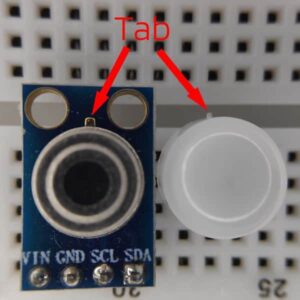
There is a tab on the MLX90614 and the Fresnel lens. To put on the Fresnel lens to MLX90614, both the tabs must be alignment together. Once the tabs are aligned, push all the way down to the housing of MLX90614. Make sure to align properly for a better focal length into the MLX90614 sensor.
Testing MLX90614 With Lenses
Three setups to see the temperature readings of the MLX90614 at different positions. The object testing is hand temperature. Bare sensor (without any lenses), lens hood, and Fresnel lens for the setup. The hand will move away from the sensor up to 30cm.
Bare Sensor
PLA Material Lens Hood
Well, the result is kind of unexpected. The sensor does not seem to catch any temperature. Even near to sensor, the temperature reading is still the same, with no changes at all. But the object temperature is higher than the ambient. Probably the black surface of the lens hood absorbs heat from the surrounding.
Fresnel Lens
With Fresnel lens put on, the ambient temperature is a little higher and the object temperature is slightly lower as compared to the bare sensor. The temperature reading is much stable. The sensor can catch the hand temperature better at some distance away from it. Overall, when near the sensor, the temperature reading is good. Beyond that, is very close to the ambient temperature which may not be accurate.
Nay! We Love Videos
Words are so boring. Watch my video to have a better understanding on how I carried out the testing.
Bye Bye
With only the sensor alone, the temperature drop is quite obvious. Fresnel lens does better for the testing. PLA Material Lens hood on the other hand shows unusual temperature behavior.
So, would you include a lens hood or Fresnel lens to your MLX90614 project to make it read the temperature at a longer distance? Leave your comments below.
Hope you find this tutorial helpful in your projects. Subscribe to our newsletter for more tutorials.









Hi, Interesting project. I don’t understand why the ambient temp is so close to hand temp. Is you room 33C ? I found the fresnel lens at Murata, but I can’t find the field of view angle for the lens. Is this a closeup rather than zoom lens?
My ambient temperature roughly 33C. I do find out when the Fresnel Lens is put on, the object’s temperature is rather low.
Most Fresnel Lens I found is for pyroelectric like PIR motion sensor. But I just getting it for a try for thermopile.
This is the Murata IML – 0687 (Farnell Datasheet) I bought for this test.
Great post. Did you know the transmission spectrum of the fresnel lens? I wonder if it’s blocking light in the wavelength range of the sensor and that’s why the resulting temperature is so low.
Not sure if I’m right. I found an article saying human body radiation is at 12μm. And the Fresnel Lens reflectance is 60% at this wavelength. Probably you are right that the Fresnel Lens is blocking some of the radiation and causing low temperature reading.